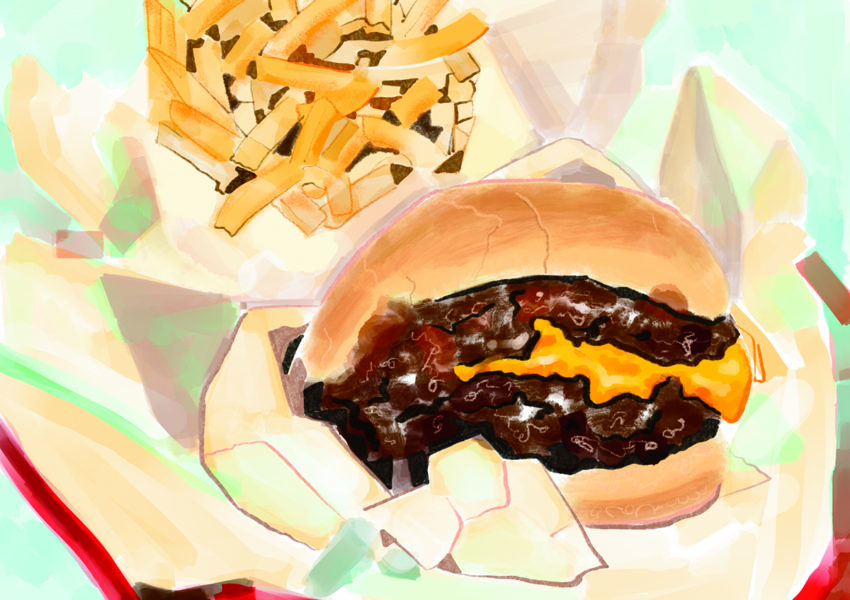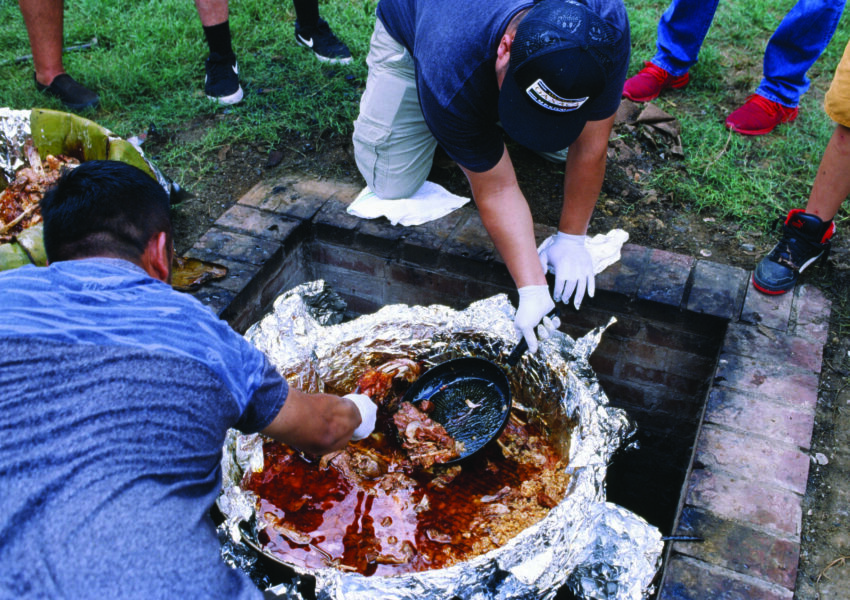Bring on the Heat Latino-owned A La Brava deserves a place in the hot sauce pantheon.
by Gustavo Arellano
![]()
Marcos Medina came to Winston-Salem, North Carolina, in 1997, when Latinos were moving to the Tar Heel State in numbers never seen before.
A native of Chihuahua, Mexico, Medina found work at a battery factory alongside family members. Soon, he began to see how the food of his native country was growing in popularity. He sensed an opportunity.
In 2008, Medina bought a Mexican restaurant in Greensboro, some thirty miles east of Winston-Salem, from a friend. He renamed it Villa del Mar Mexican Grill. For the next decade, Medina ran a thriving eatery that attracted Latino and non-Latino customers alike. He says that Mexican American customers gravitated toward his mariscos (seafood dishes) and grilled meats; Sur-Mex standards like ACP (arroz con pollo) and the Speedy Gonzales combo platter (a taco, an enchilada, and a choice of rice or beans) were popular with non-Latino diners.
Medina offered complimentary chips along with a mild red salsa with a relish-like texture. Soon, though, customers discovered his house-made hot sauce—and they couldn’t get enough.
At first, Medina’s hot sauce didn’t have a name. But there was no confusing it for mass-market brands, Mexican or otherwise. It called for olive oil and red wine, two ingredients rarely used in Mexican cooking. They imparted an unctuous texture and a tangy flavor with a hint of sweetness. While the original flavor relies on the smokey flavors of chipotle peppers, the spice level hits the almost-impossible middle ground of pleasing Mexican palates while enticing non-Mexican palates to splash some more without panting.
“There’s a lot of salsas that are so hot, but have no flavor—that’s torture,” he told me recently over the phone. (I’ve translated our conversation, which took place in Spanish.) “And that’s all that I was able to find in markets in North Carolina.”
Medina’s hot sauce was so popular at Villa del Mar that customers began to ask for to-go containers of the stuff. Eventually, someone suggested he bottle and sell it. “That got me inspired,” he said.

In 2015, A La Brava Hot Sauce was officially born. (In Mexican Spanish, the phrase roughly translates as “Bring it on.”) It’s a wonderful hot sauce, its logo a red silhouette of a sneering horse with steam coming out of his nostril. “From my mom’s kitchen to yours,” the label partly reads, “it is my promise that y’all [will] savor” A La Brava.
Retail sales at the restaurant were so brisk that Medina then began to stock A La Brava in stores around the Piedmont Triad—supermarket chains like Piggly Wiggly and Compare Foods, local meat markets and mercaditos (the Mexican version of a New York-style bodega). Buoyed by his success, Medina sold Villa del Mar in 2017 and reinvested the profits into production of A La Brava. At the time, the operation was based out of his home, and his employees were family members.
Getting clients “wasn’t hard at all,” Medina said. Today, A La Brava sells 600 bottles a week, and Medina hopes to see that number grow. His social media presence is minimal; business comes via word of mouth and online sales spurred by local media coverage. In January, he moved production out of his house and into a shared commercial kitchen, and he hopes to hire non-family soon.
“I want to be in the four corners of the United States,” said the fifty-three-year-old. “I want to be where the Latinos are, and where everyone else is.”
Consumers can now buy A La Brava across North Carolina and in parts of South Carolina, Virginia, and Tennessee. His online customers span from California to Vermont, and even abroad.
“I want to be where the Latinos are, and where everyone else is.”
“I had someone in Sweden who used to live in Charlotte and said she needed A La Brava,” he said with a chuckle. “She wanted an entire box. Well, shipping was going to be a lot—I finally figured out it would be $150 via the post office. She was willing to pay that—which is to say, she liked our salsa a lot.”
By salsa, Medina means “hot sauce.” In Mexico, “salsa” refers to both the chunkier product made at restaurants and homes—such as salsa verde—and the bottled commercial brands like Cholula, Salsa Huichol, and Valentina’s. Mexicans use both according to taste—I prefer hot sauce for quesadillas and soups because the taste lingers longer, and salsa on virtually everything else because the flavor is fresher.
Today, Medina sells three flavors of A La Brava. The original Diabla is almost as rich as a béarnaise sauce, with a hint of red wine for tang. It stands up to hearty food like quesadillas or enchiladas. The Habanera flavor has citrus notes and the habanero pepper’s signature kick. Subtle rather than overwhelming, it’s perfect on seafood. A triple-X scrawled on the Mayan-Ghost bottle taunts potential diners, but in fact the hottest version of A La Brava is quite bearable, with a hint of sweetness to tame the fire. It works well on rice and meats.
I’m a fan of A La Brava’s products. But what interests me even more is its significance.
The South loves its heat. It’s home to iconic national brands like Tabasco* and Crystal in Louisiana, and Winston-Salem’s own Texas Pete. My wife has stocked other Southern-based hot sauce brands in the market she owns in our hometown of Santa Ana, California. Lately I’ve seen Zab’s, a California-made sauce flavored with Florida datil peppers, at hip restaurants and markets around Los Angeles.
So far, A La Brava is the only Latino-owned, Southern-made hot sauce brand I’ve found. Far from wanting to corner the market, Medina actually hopes to see more of his fellow immigrants enter the hot sauce business.
“A lot of Latinos now ask me about how to sell hot sauce—how to bottle, the proper way to do it, everything,” he said. He gives them advice, “because that’s the right thing to do.”
When I spoke with Medina on the phone this spring, I had a forehead-smack moment: I’d actually eaten at Villa del Mar years earlier. I had been in North Carolina to research ACP (arroz con pollo), a popular Sur-Mex dish of queso-topped chicken over rice that few Mexican diners order, or even enjoy. I ordered it at a Greensboro Mexican restaurant for research purposes. After that meal, I still couldn’t understand the rabid fandom that ACP inspires—but I was hooked on the restaurant’s house hot sauce.
I reminded Medina about our previous encounter. He remembered it, too. (For the record, he shares my puzzlement over ACP.) “Well,” he said, “I’m glad I got a return customer!”
Gustavo Arellano is a Gravy columnist and host of The Times, a weekday news podcast from the Los Angeles Times.
*McIlhenny Company, maker of TABASCO® brand products, is a longtime donor to SFA.
![]()
SIGN UP FOR THE DIGEST TO RECEIVE GRAVY IN YOUR INBOX.




